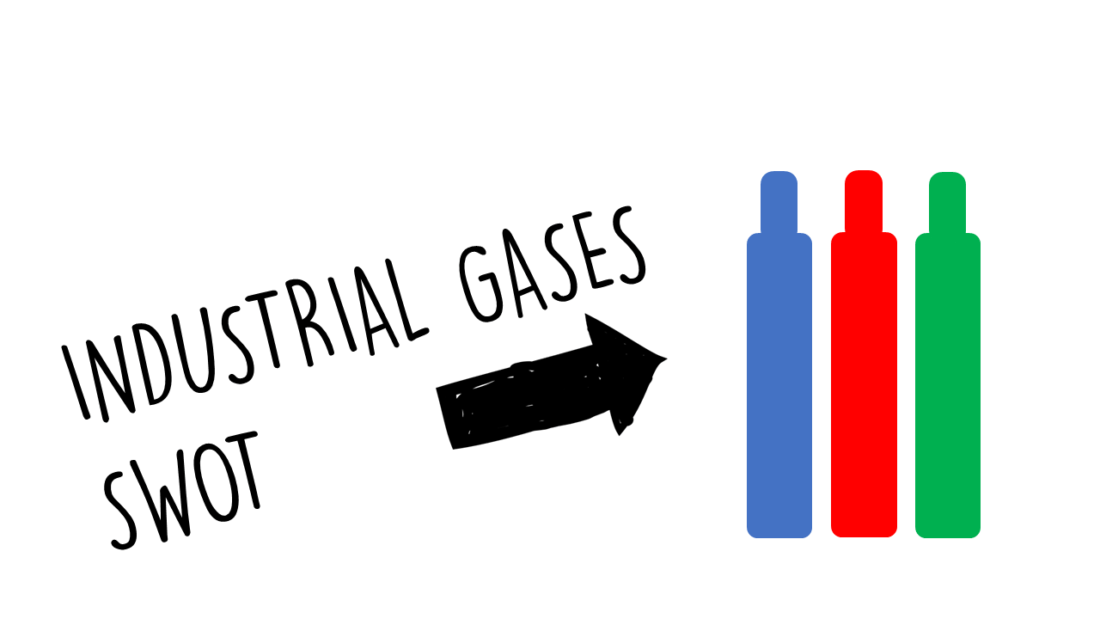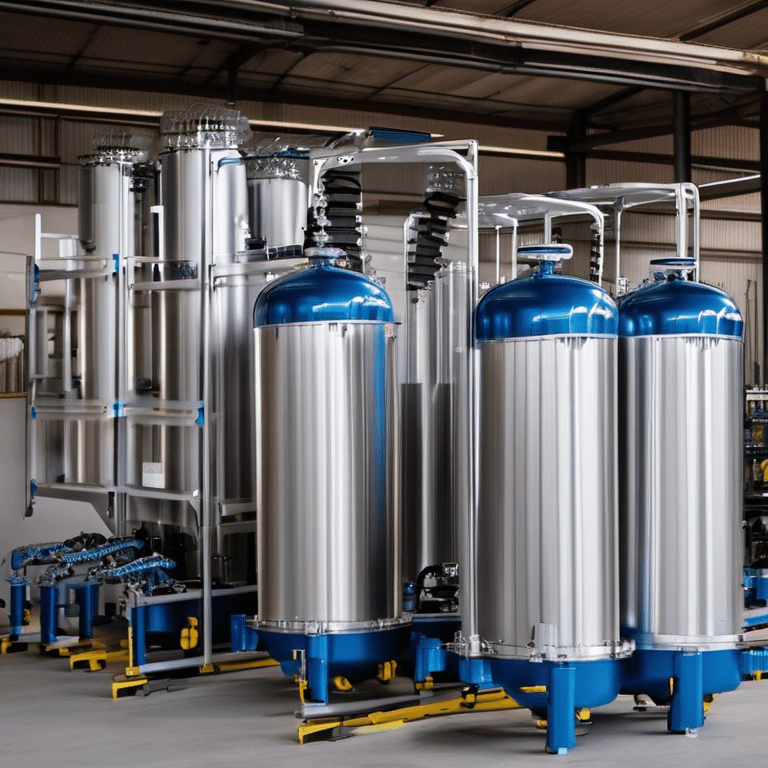Introduction to Air Products and its Importance in the Industry
Air Products is a global leader in the industrial gas industry, providing a wide range of products and services to customers in various sectors. The company specializes in the production and distribution of atmospheric gases, process gases, and specialty gases, as well as equipment and technology for gas separation and purification. With a presence in over 50 countries and a strong customer base, Air Products plays a critical role in supporting industries such as manufacturing, healthcare, energy, and electronics.
Understanding the strengths, weaknesses, opportunities, and threats (SWOT) of Air Products is crucial for both the company and its stakeholders. By conducting a SWOT analysis, the company can identify areas of improvement and potential growth, as well as mitigate risks and challenges. This analysis provides valuable insights into the internal and external factors that impact Air Products’ performance and helps in strategic decision-making.
Understanding SWOT Analysis and its Application to Air Products
SWOT analysis is a strategic planning tool used to evaluate the strengths, weaknesses, opportunities, and threats of a company or organization. It involves identifying internal factors (strengths and weaknesses) that are within the company’s control and external factors (opportunities and threats) that are influenced by the external environment.
For Air Products, conducting a SWOT analysis allows the company to assess its competitive position in the market, identify areas where it can improve or capitalize on opportunities, and anticipate potential challenges or risks. By understanding its strengths, weaknesses, opportunities, and threats, Air Products can develop strategies to leverage its strengths, address weaknesses, seize opportunities, and mitigate threats.
Strengths of Air Products: A Deep Dive into its Competitive Advantages
Air Products has several key strengths that give it a competitive edge in the industry. Firstly, the company has a strong global presence with operations in over 50 countries. This global footprint allows Air Products to serve customers worldwide and tap into diverse markets. The company’s extensive network of production facilities, distribution centers, and customer service centers ensures efficient and reliable supply chain management.
Secondly, Air Products has a diverse product portfolio that caters to various industries and applications. The company offers a wide range of atmospheric gases, including nitrogen, oxygen, and argon, as well as specialty gases for specific applications. This diverse product offering allows Air Products to meet the unique needs of different customers and industries.
Lastly, Air Products has built strong customer relationships over the years. The company works closely with its customers to understand their specific requirements and provide tailored solutions. This customer-centric approach has helped Air Products establish long-term partnerships and maintain a loyal customer base.
Opportunities for Air Products: Exploring Potential Areas of Growth
Air Products has several opportunities for growth that it can capitalize on to expand its market share. Firstly, emerging markets present significant growth potential for the company. As developing economies continue to industrialize and urbanize, the demand for industrial gases is expected to increase. Air Products can leverage its global presence and expertise to enter these markets and establish a strong foothold.
Secondly, there is a growing demand for industrial gases in new applications such as additive manufacturing (3D printing), food processing, and pharmaceuticals. Air Products can invest in research and development to develop innovative solutions for these emerging applications and capture new market opportunities.
Lastly, there is an increasing demand for clean energy solutions globally. As governments and industries focus on reducing carbon emissions and transitioning to renewable energy sources, there is a need for technologies that enable clean energy production and storage. Air Products can leverage its expertise in gas separation and purification to develop solutions for hydrogen production, carbon capture, and energy storage.
Analyzing the Weaknesses of Air Products and Strategies for Improvement
While Air Products has several strengths, it also faces certain weaknesses that need to be addressed for sustained growth. One of the key weaknesses is the company’s dependence on a few key customers. This concentration of customers poses a risk as any loss of business from these customers could have a significant impact on Air Products’ revenue. To mitigate this risk, the company should focus on diversifying its customer base by targeting new industries and geographies.
Another weakness of Air Products is its limited geographic diversification. While the company has a strong global presence, it is heavily reliant on certain regions for its revenue. This regional concentration exposes Air Products to risks such as economic downturns or political instability in those regions. To address this weakness, the company should explore opportunities to expand into new markets and diversify its revenue streams.
Threats to Air Products: Identifying Challenges and Mitigation Measures
Air Products faces several threats and challenges that could impact its performance and growth. One of the main threats is intense competition in the industrial gas industry. The market is highly competitive, with several global and regional players vying for market share. To mitigate this threat, Air Products should focus on differentiating itself through innovation, technology, and superior customer service.
Regulatory changes also pose a threat to Air Products. As governments around the world tighten regulations related to emissions, safety, and environmental standards, the company needs to ensure compliance and adapt its operations accordingly. This may require investments in technology and infrastructure to meet the evolving regulatory requirements.
Economic downturns can also impact Air Products’ business, as industries may reduce their production or cut costs during challenging economic times. To mitigate this threat, the company should focus on building strong relationships with customers and providing value-added solutions that help them optimize their operations even in difficult economic conditions.
Leveraging Air Products’ Strengths to Capitalize on Market Opportunities
Air Products can leverage its strengths to capitalize on the identified market opportunities. For example, the company’s strong global presence can be used to enter emerging markets and establish a strong foothold. By leveraging its existing infrastructure, supply chain, and customer relationships, Air Products can quickly expand its market share in these high-growth regions.
The company’s diverse product portfolio can also be leveraged to capture new market opportunities. By investing in research and development, Air Products can develop innovative solutions for emerging applications such as additive manufacturing, food processing, and pharmaceuticals. This will allow the company to tap into new customer segments and increase its revenue streams.
Furthermore, Air Products’ strong customer relationships can be leveraged to drive growth. By understanding the evolving needs of its customers and providing tailored solutions, the company can deepen its partnerships and secure long-term contracts. This will not only help in retaining existing customers but also attract new customers through positive word-of-mouth and referrals.
Exploring New Markets: How Air Products can Expand its Reach
To diversify its revenue streams and expand its customer base, Air Products should explore potential new markets. One such market is the renewable energy sector. As the world transitions to clean energy sources, there is a growing demand for technologies that enable hydrogen production, carbon capture, and energy storage. Air Products can leverage its expertise in gas separation and purification to develop solutions for these applications and enter the renewable energy market.
Another potential market for Air Products is the healthcare industry. With the increasing focus on healthcare infrastructure and advancements in medical technology, there is a growing demand for medical gases and related equipment. Air Products can leverage its existing capabilities in gas production and distribution to enter this market and provide critical gases for medical applications.
Additionally, Air Products can explore opportunities in the water treatment industry. As water scarcity becomes a global concern, there is a need for technologies that enable efficient water treatment and purification. Air Products can leverage its expertise in gas separation and purification to develop solutions for water treatment applications and enter this growing market.
Innovation and Technology: Key Drivers for Air Products’ Success
Innovation and technology play a crucial role in Air Products’ success. The company has a strong focus on research and development, investing in new technologies and solutions to meet the evolving needs of its customers. By continuously innovating, Air Products can develop new products and services that provide value to its customers and differentiate itself from competitors.
One example of how Air Products has used innovation and technology to drive growth is through its advancements in hydrogen energy. The company has developed technologies for hydrogen production, storage, and distribution, enabling the use of hydrogen as a clean energy source. This innovation has positioned Air Products as a leader in the hydrogen energy market and has opened up new opportunities for growth.
Another example is Air Products’ focus on digitalization and automation. The company has invested in digital technologies to optimize its operations, improve efficiency, and enhance customer experience. By leveraging data analytics, artificial intelligence, and automation, Air Products can streamline its processes, reduce costs, and provide real-time insights to customers.
Conclusion: Harnessing the Power of SWOT Analysis for Air Products’ Growth and Sustainability
In conclusion, conducting a SWOT analysis is crucial for Air Products’ growth and sustainability. By understanding its strengths, weaknesses, opportunities, and threats, the company can develop strategies to leverage its strengths, address weaknesses, seize opportunities, and mitigate threats. The analysis provides valuable insights into the internal and external factors that impact Air Products’ performance and helps in strategic decision-making.
Air Products’ strengths such as its global presence, diverse product portfolio, and strong customer relationships give it a competitive edge in the industry. The company can capitalize on opportunities such as emerging markets, new applications for industrial gases, and increasing demand for clean energy solutions to expand its market share.
However, Air Products also faces weaknesses such as dependence on key customers and limited geographic diversification. To address these weaknesses, the company should focus on diversifying its customer base and expanding into new markets.
Threats such as intense competition, regulatory changes, and economic downturns can impact Air Products’ business. To mitigate these threats, the company should differentiate itself through innovation, technology, and superior customer service, ensure compliance with regulations, and build strong relationships with customers.
By harnessing the power of SWOT analysis and leveraging its strengths, Air Products can position itself for growth and sustainability in the industrial gas industry. The company’s focus on innovation, technology, and customer-centricity will be key drivers for its success in the future.




